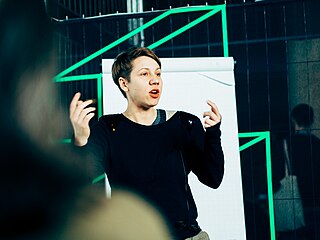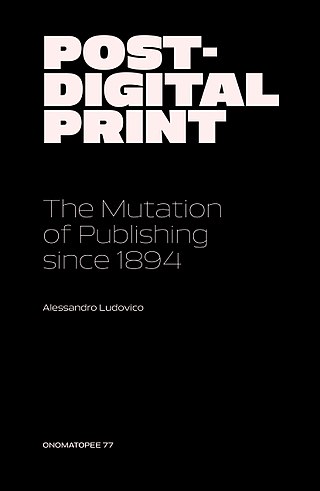Software art is a work of art where the creation of software, or concepts from software, play an important role; for example software applications which were created by artists and which were intended as artworks. As an artistic discipline software art has attained growing attention since the late 1990s. It is closely related to Internet art since it often relies on the Internet, most notably the World Wide Web, for dissemination and critical discussion of the works. Art festivals such as FILE Electronic Language International Festival, Transmediale (Berlin), Prix Ars Electronica (Linz) and readme have devoted considerable attention to the medium and through this have helped to bring software art to a wider audience of theorists and academics.
Video game art is a specialized form of computer art employing video games as the artistic medium. Video game art often involves the use of patched or modified video games or the repurposing of existing games or game structures, however it relies on a broader range of artistic techniques and outcomes than artistic modification and it may also include painting, sculpture, appropriation, in-game intervention and performance, sampling, etc. It may also include the creation of art games either from scratch or by modifying existing games.
mezangelle is a poetic-artistic language developed in the 1990s by Australian-based Internet artist Mez Breeze. It is recognized as a central contribution to Codework, Electronic literature, Internet Art and digital writing in general.
An artist's statement is an artist's written description of their work. The brief text is for, and in support of, their own work to give the viewer understanding. As such it aims to inform, connect with an art context, and present the basis for the work; it is, therefore, didactic, descriptive, or reflective in nature.

Fred Forest is a French new media artist making use of video, photography, the printed press, mail, radio, television, telephone, telematics, and the internet in a wide range of installations, performances, and public interventions that explore both the ramifications and potential of media space. He was a cofounder of both the Sociological Art Collective (1974) and the Aesthetics of Communication movement (1983).
Rhizome is an American not-for-profit arts organization that supports and provides a platform for new media art.
Furtherfield.org is an artist-led online community, arts organisation and online magazine. It creates and supports global participatory projects with networks of artists, theorists and activists. and offers "a chance for the public to present its own views and enter or alter various art discourses". Their lab-office and gallery currently operates out of in Finsbury Park in London, UK.

Heath Bunting is a British contemporary artist. Based in Bristol, he is a co-founder of the website irational.org, and was one of the early practitioners in the 1990s of Net.art. Bunting's work is based on creating open and democratic systems by modifying communications technologies and social systems. His work often explores the porosity of borders, both in physical space and online. In 1997, his online work Visitors Guide to London was included in the 10th documenta curated by Swiss curator Simon Lamunière. An activist, he created a dummy site for the European Lab for Network Collision (CERN).
Arts in Second Life is an artistic area of a 3D social network that has served, since 2003, as a platform for various artistic pursuits and exhibitions.

Elle Mehrmand is a new media performance artist and musician. Mehrmand's work combines the body and electronics. Her performance art work has been presented at museums, galleries and art festivals throughout the Americas. She is a member of the band Assembly of Mazes.
The Maryland Institute for Technology in the Humanities (MITH) is an international research center that works with humanities in the 21st century. A collaboration among the University of Maryland College of Arts and Humanities, Libraries, and Office of Information Technology, MITH cultivates research agendas clustered around digital tools, text mining and visualization, and the creation and preservation of electronic literature, digital games and virtual worlds.

Helen Varley Jamieson is a digital media artist, playwright, performer, director and producer from New Zealand. She "is engaged in an ongoing exploration of the collision between theatre and the internet." Since 1997 she has been working on the internet professionally. In the year 2000 Helen Varley Jamieson coined the term cyberformance. This term is a combination of two words, cyberspace and performance. Jamieson states that "cyberformance can be located as a distinct form within the subsets of networked performance and digital performance, and within the overall form of theatre, as it is a live performance form with an audience that is complicit in the completion of the work in real time."

Annie Abrahams is a Dutch performance artist specialising in video installations and internet based performances, often deriving from collective writings and collective interaction. Born and raised in Hilvarenbeek in the Netherlands, she migrated to and settled in France in 1987. Her performance work challenges and questions the limitations and possibilities of online communication and collaboration. Abrahams describes her body of work as "an aesthetics of trust and attention." Studying biology became an inspiration for her future line of work. "When studying biology I had to observe a colony of monkeys in a zoo. I found this very interesting because I learned something about human communities by watching the apes. In a certain way I watch the internet with the same appetite and interest. I consider it to be a universe where I can observe some aspects of human attitudes and behaviour without interfering."

Rosa Menkman is a Dutch art theorist, curator, and visual artist specialising in glitch art and resolution theory. She investigates video compression, feedback, and glitches, using her exploration to generate art works.

Erica Scourti is an artist based in the UK whose works have been exhibited at the Brighton Photo Biennial, the Hayward Gallery Project Space, and the Photographers' Gallery in London Her performance project, Life In Adwords (2012), involved her keeping a diary by email to her Google account and creating videos based on the advertising targeted to her as a result.

Post-Digital Print: The Mutation of Publishing since 1894 is a 194-page publication written by Alessandro Ludovico in 2012. This book is said to encompass post digital print and explain examples of the many ways print has been expanded on, changed, and different inventions that have come about over the post-digital age. Ludovico makes it a point to emphasize how print has been thought to die off since 1894 but how in his opinion it has done no such thing, but instead is needed for the future. The book is one of the 10 best books of 2019 recommended by LSE.
Patrick Lichty is a conceptual media artist, activist, curator, and educator. Lichty is currently a Creative Digital Media professor at Winona State University.

Chiara Passa is a visual artist working in media art since the second half of the 1990s.

Gretta Louw is a multi-disciplinary artist who has worked with artforms as varied as digital media and networked performance, installation and video art, and fibre art. She lives and works in Germany and Australia. Her artistic practice explores the potential of art as a means of investigating psychological phenomena, particularly in relation to new technologies and the internet. Her focus is on how new digital technologies are shaping contemporary experience.
Ruth Catlow is an English artist-theorist and curator whose practice focuses on critical investigations of digital and networked technologies and their emancipatory potential. She is also the Director, with Marc Garrett, of the Furtherfield gallery, commons space, and online arts-writing platform based out of London, which the duo founded in 1997.











